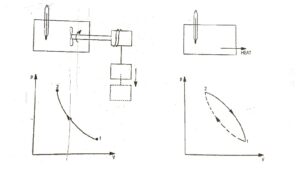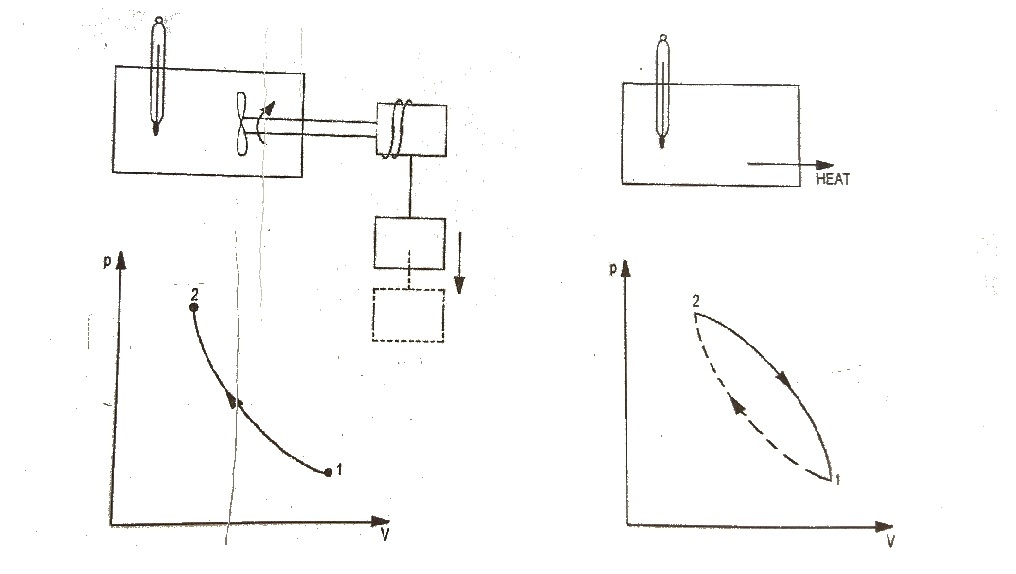First Law of a Closed System Undergoing a Cycle
First Law of a Closed System Undergoing a Cycle :
 |
| Fig.1 First Law of Thermodynamics |

 |
| Fig.1 First Law of Thermodynamics |
State, path and process State A state is condition of system and is specified by its properties. At a given state all the properties of a system have definite values Path Change of state of a system is the consequence of any operation in which properties will change. The series of states through which system…
Energy interaction (Transition) An energy interaction or transition is said to occur or to exist between two systems when one system influences a sustains the state of the other system. Thermodynamics mainly studies the interactions between heat and work and associated property change of the system In otherwords Energy…
Macroscopic and Microscopic Approaches The behaviour of matter can be studied by two approaches 1. Macroscopic approach, 2. Microscopic approach 1. Macroscopic approach – In the macroscopic approach a certain quantity of matter is considered for study without knowing the behaviour of individual…
Theorem 3 The total number of subsets of a finite set containing n elements is 2ⁿ. Proof Let A be a finite set containing n elements.Let 0 ≤ r ≤ n. Consider those subset,of A that have r elements each.We know that the number of ways in which r elements can be chosen…
Quasi-static process A process during which the system remains nearly close to an equilibrium state is called Quasistatic process. In other words departure of the state of a system from Thermodynamic Equilibrium state will be Infinitesimally small. Quasi-static process Consider a system as shown in figure the system initially is in equilibrium state as weights…
Difference of sets Let A and B be two sets. The difference of A and B written as A – B, is the set of all those elements of A which do not belong to set B Thus A – B={ x : x ∈ A and x ∉ B} or A – B={ x…
helpful content.
Your blog is very valuable which you have shared here about low cost exercise cycle I appreciate your efforts which you have put into this article and also it is a gainful article for us. Thank you for sharing this article here.